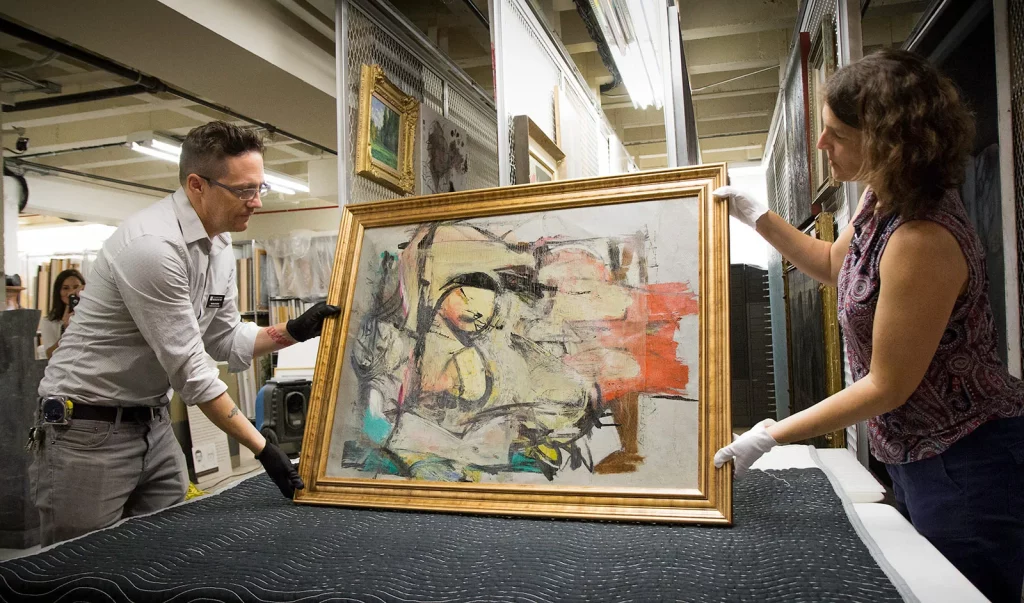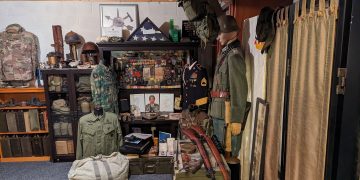In the world of rare art, priceless collectibles, and cultural artifacts, there is a thriving market that often runs parallel to the world of high-stakes crime. From stolen paintings and rare historical documents to illegal artifacts looted from war zones, the demand for unique, irreplaceable items has made the collectibles industry a prime target for criminals. The FBI, one of the most powerful law enforcement agencies in the world, has a secret division dedicated to tracking and recovering these high-value treasures: the Art Crime Team.
The existence of this covert unit has long been kept under wraps, but recent investigations have brought to light their extensive work in investigating the theft and illicit trade of rare and collectible items. While most people might not associate the FBI with rare artwork or antiquities, the agency has an entire unit focused on combating art crime and recovering valuable stolen items. This team is responsible for solving some of the most high-profile art thefts and cultural property crimes in history.
In this article, we will take a deep dive into the FBI’s secret collector squad, exploring how they track stolen items, investigate criminal activities in the collectibles market, and the most notable recovery stories that have captured international attention.
The Art Crime Team: The FBI’s Secret Collector Squad
The FBI’s Art Crime Team was founded in 2004, but its origins can be traced back decades earlier, to the early 20th century. Since then, the agency has amassed a wealth of expertise and resources to combat the increasing trend of art and cultural property crimes. The unit works in collaboration with museums, galleries, auction houses, and international law enforcement agencies to monitor, recover, and protect stolen items. They specialize in a wide range of areas, from stolen paintings and sculptures to rare artifacts, manuscripts, and historical documents.
The FBI’s Art Crime Team is composed of specially trained agents, art historians, and forensic experts who work undercover, tracking stolen items through a variety of methods, including databases, intelligence gathering, and international networks. The team’s operations often span the globe, as criminal networks that deal in stolen art and artifacts often operate beyond national borders. With global demand for rare collectibles reaching unprecedented levels, the task of recovering stolen items has become more complex and dangerous.
One of the primary objectives of the team is to track the stolen items through their networks, working with international authorities to ensure that stolen goods are returned to their rightful owners. The FBI has access to a variety of databases that allow agents to trace stolen goods through auctions, galleries, and private sales. They also maintain a close relationship with experts in art law, ethics, and authentication to ensure that the stolen goods are accurately identified and authenticated upon recovery.
The Art Crime Team’s work is highly secretive, and it often requires a great deal of patience and subtlety. Many of the recovered items have been hidden for years or decades, and the investigation process can take months or even years. Agents work tirelessly, following leads, gathering evidence, and using sophisticated forensic methods to track down the items and their illicit owners.
High-Profile Recoveries: A History of Success
Over the years, the FBI’s Art Crime Team has recovered some of the most famous stolen items in history. These high-profile recoveries have made headlines around the world, showcasing the FBI’s commitment to recovering rare and culturally significant items. Among the most notable cases are the recovery of art from notorious heists, the return of stolen cultural artifacts, and the ongoing efforts to prevent the illegal trade in priceless items.
The Isabella Stewart Gardner Museum Heist
Perhaps the most famous case handled by the FBI’s Art Crime Team is the Isabella Stewart Gardner Museum heist. In 1990, two men posing as police officers entered the museum in Boston, Massachusetts, and stole 13 works of art valued at over $500 million. The stolen items included works by renowned artists such as Vermeer, Rembrandt, and Degas.
The case remained unsolved for years, with little to no leads on the whereabouts of the stolen artwork. However, the FBI’s Art Crime Team never gave up. They continued to follow leads, investigate potential suspects, and track down possible buyers of the stolen pieces. In 2013, the FBI announced that they had made significant progress in the case and were working toward the eventual recovery of the paintings. Although the paintings have not yet been returned, the case remains one of the FBI’s top priorities, and investigators continue to work relentlessly to uncover the truth.
The Recovery of Stolen Native American Artifacts
In another significant case, the FBI’s Art Crime Team was able to recover over 20 Native American artifacts that had been stolen from various museums across the United States. The stolen items included sacred ceremonial objects, jewelry, and other culturally significant artifacts that had been illegally trafficked by criminal groups. The artifacts were traced to a private collection, where they were seized and returned to their rightful owners.
This recovery was especially significant because it not only brought back irreplaceable cultural artifacts but also raised awareness about the illegal trafficking of Native American artifacts. The FBI’s efforts in this case have helped spark a broader conversation about the protection of indigenous cultural property and the need for stronger laws to prevent the theft and illegal trade of these sacred objects.
The Return of Stolen Egyptian Antiquities
The FBI’s Art Crime Team has also been instrumental in recovering stolen Egyptian antiquities. One of the most high-profile recoveries involved the return of a 3,000-year-old statue of a pharaoh, which had been illegally smuggled into the United States. The statue had been looted from an Egyptian tomb in the 1970s and eventually found its way into a private collection.
After years of investigation, the FBI was able to track down the statue and return it to Egypt in 2019. This recovery marked another victory for the FBI, highlighting their role in combating the illegal trade of ancient artifacts and their commitment to returning cultural treasures to their countries of origin.

The Dark Side of the Collectibles Market
While the FBI’s Art Crime Team has had significant success in recovering stolen items, their work also exposes the darker side of the collectibles market. The demand for rare and priceless items has led to a thriving black market for stolen art and artifacts. Criminals often target museums, private collectors, and archaeological sites to steal valuable items and sell them to the highest bidder.
One of the biggest challenges faced by the FBI is the ease with which stolen items can be moved across international borders. Stolen artworks and artifacts often pass through multiple hands before they are eventually sold at auctions or private sales, making it difficult to trace their origins. In some cases, the stolen items are sold to unsuspecting buyers who are unaware of their illicit history.
The illegal art trade is also closely tied to organized crime groups and terrorist organizations. The proceeds from the sale of stolen art and cultural artifacts often fund illegal activities, including drug trafficking, human trafficking, and terrorism. The FBI’s Art Crime Team works closely with international law enforcement agencies to disrupt these criminal networks and prevent stolen items from entering the market.
The Ethical Dilemma: Restitution vs. Ownership
While the FBI’s Art Crime Team has had considerable success in recovering stolen items, their work also raises important ethical questions about the ownership of cultural property. In many cases, stolen items are returned to their country of origin, where they are often displayed in national museums or cultural institutions. However, not all countries agree on what should be done with recovered artifacts.
Some argue that certain cultural items belong to the global community and should be shared and displayed in museums around the world. Others believe that cultural items should remain in their country of origin, where they can be preserved and celebrated as part of that nation’s history and identity. The debate over the restitution of stolen artifacts is complex, and the FBI’s role in returning these items to their rightful owners is often fraught with political and diplomatic challenges.
The FBI’s Ongoing Mission
The work of the FBI’s Art Crime Team is far from over. As the demand for rare and valuable collectibles continues to grow, so does the threat of art theft and illegal trafficking. The FBI’s Art Crime Team remains committed to tracking down stolen items, disrupting criminal networks, and returning stolen treasures to their rightful owners.
The work of this secret squad is crucial in maintaining the integrity of the art and collectibles market. By recovering stolen items, the FBI ensures that these irreplaceable treasures are protected for future generations, allowing them to be enjoyed and appreciated for years to come.
Conclusion: The FBI’s Role in Protecting Cultural Heritage
The FBI’s Art Crime Team is a vital part of the agency’s efforts to combat crime in the art and collectibles market. Through their work in recovering stolen items and disrupting criminal networks, the team has demonstrated an unwavering commitment to protecting cultural heritage. Their high-profile recoveries serve as a reminder of the importance of safeguarding these treasures and the role that law enforcement plays in ensuring that cultural property remains accessible to the public.
While the work of the FBI’s secret collector squad often goes unnoticed, their efforts are critical in maintaining the integrity of the global art market and protecting the cultural patrimony of nations around the world. As long as there is demand for rare and valuable items, the FBI will continue to pursue criminals who seek to exploit these treasures for profit. And with each high-profile recovery, the FBI reaffirms its role as a protector of cultural heritage in the 21st century.

































